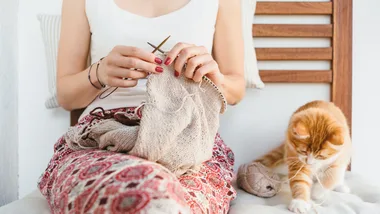Many non-drug therapies, whether taken alone or in combination, work just as well or even better – without the troublesome side effects. Along with eating a low-fat, low-salt diet and taking moderate exercise, here’s a look at the best of what the alternative world has to offer. 1. Try a vessel-relaxing herb In a recent study published in Phytotherapy Research, people with mild high blood pressure took either 500mg of an extract of the herb hawthorn, 600mg of magnesium (a mineral that relaxes arteries), a combination of the two, or a dummy pill. The hawthorn group showed the biggest decrease in blood pressure. 2. Get friendly with garlic Garlic has a wide range of positive effects on circulation, thinning blood, and dissolving blood fats. Studies have shown that people who eat lots of garlic-rich meals have lower blood pressure than those who don’t. 3. Give needles a try Scientists at Harvard Medical School studied a group of 192 patients: one group received acupuncture according to the diagnostic criteria of traditional Chinese medicine (TCM) and one got ‘pretend’ acupuncture, where the needles were placed in areas not involved in high blood pressure treatment. Results were extremely positive, with people dropping between 20-40 systolic points, and some patients even being able to come off medications. 4. Take fatty acids Omega-3 fatty acids thin the blood, easing its passage through the arteries. In a study published in Thrombosis Research, people with mild high blood pressure were given either the omega-3 fatty acids eicosapentaenoic acid (EPA) and docosahexaenoic acid (DHA) or a placebo. After four months, those on the omega-3 fatty acid regimen had an average decrease in systolic pressure six points below that of the placebo group. 5. Try antioxidants Researchers at St James University Hospital in Leeds, England gave volunteers with high blood pressure an antioxidant supplement containing vitamins A, C, E, and the mineral selenium for eight weeks, then a placebo for eight weeks. Their average blood pressure fell when they took the antioxidant, but not when they took the dummy pill.
Home Page 5524
Drug-free blood pressure solutions
Many non-drug therapies, whether taken alone or in combination, work just as well or even better – without the troublesome side effects. Along with eating a low-fat, low-salt diet and taking moderate exercise, here’s a look at the best of what the alternative world has to offer.





































